By now, Xiaomi basically established their Redmi Note series as one of the top setters for what a bang-for-your-buck midrange smartphone should be. Last year, we gave the Note 10 Pro a number of thumbs up for the upgrades it received. And now that we have the Redmi Note 11 Pro 5G, let’s find out if it still reigns supreme in its range. Continue reading for our full review.
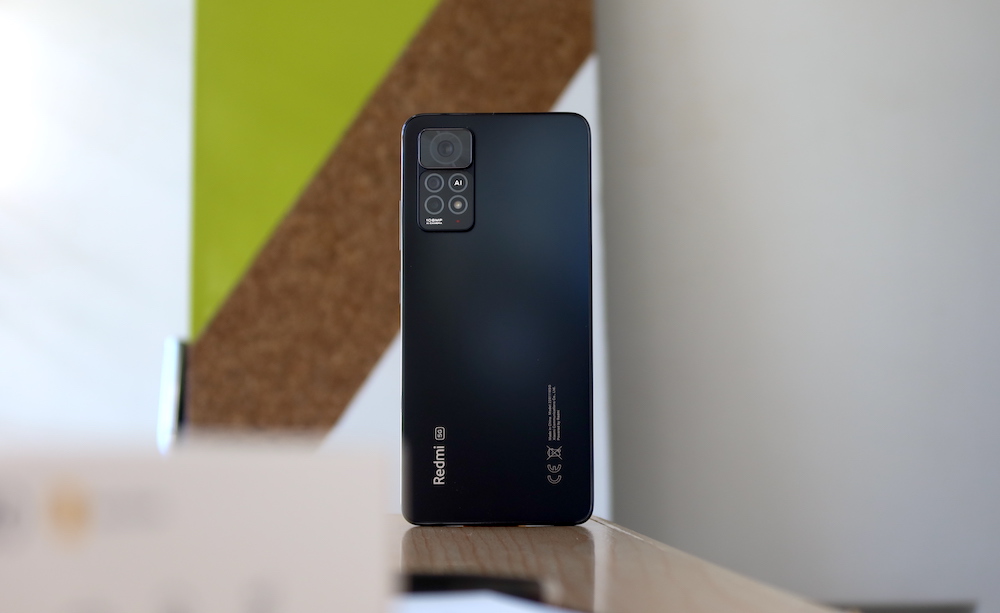
Table of Contents
Right off the bat, the first thing we noticed with this phone is how hefty it is. The Redmi Note 11 Pro is thick with sharp and flat edges, which isn’t really easy to use one-handed nor slip into pockets. Nonetheless, it feels and looks robust, plus, its IP53 dust and splash resistant so it should be fine for people with slippery hands. Take note that this doesn’t mean that it’s waterproof, but it should survive accidental splashes or rain.
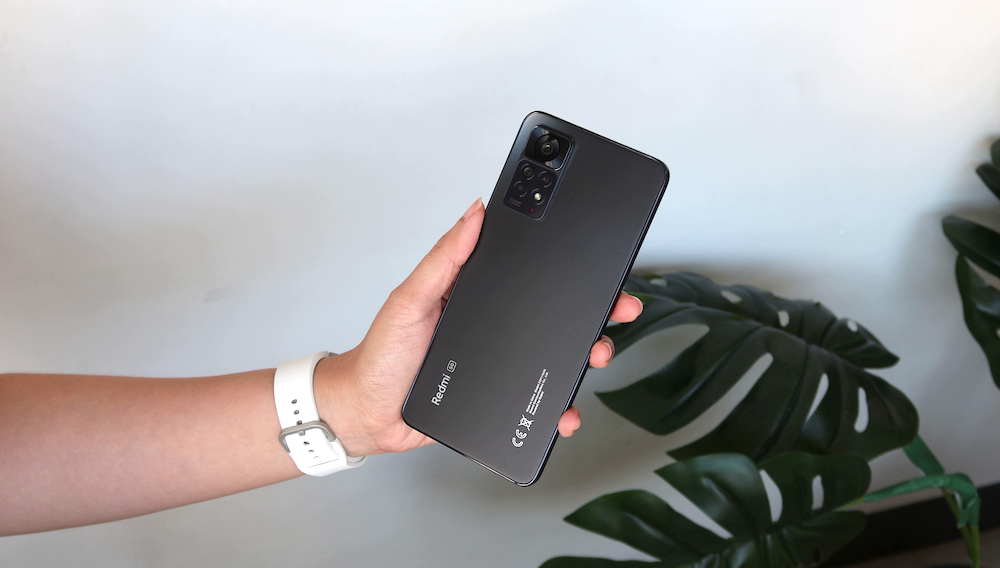
The unit we have is in the Mysterious Black color, and it sports a solid metal chassis with a frosted glass back that gives off somehow a light effect when moved towards different angles. We do prefer this to a glossy finish since it’s less prone to smudges. Locally, it’s available in Polar White and Atlantic Blue.
More at the back, we get a protruding 2 square camera module on the upper left corner to house its triple rear cameras and LED flash. Then there’s some Redmi branding below.
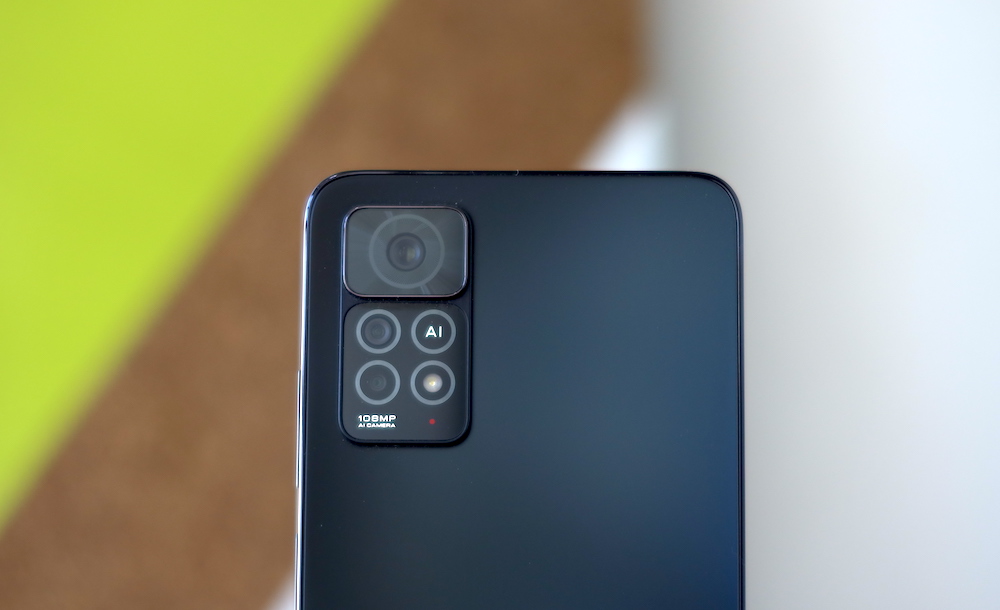
Found on the right side are all the buttons; the volume rocker and the power key, which doubles as a fingerprint scanner.
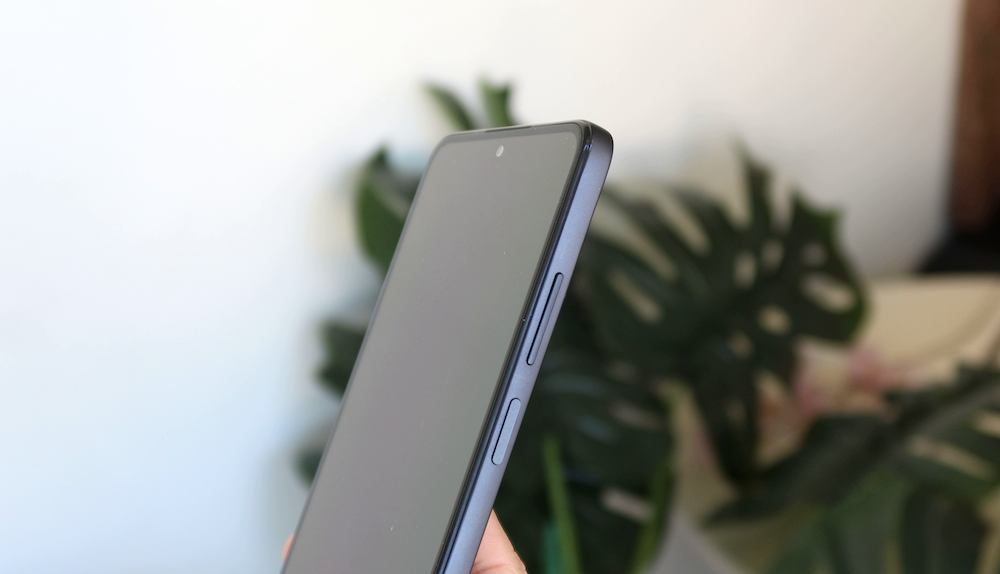
Meanwhile, located on top is a secondary noise-canceling microphone along with a second set of speaker grills, 3.5mm audio port, and an IR blaster.
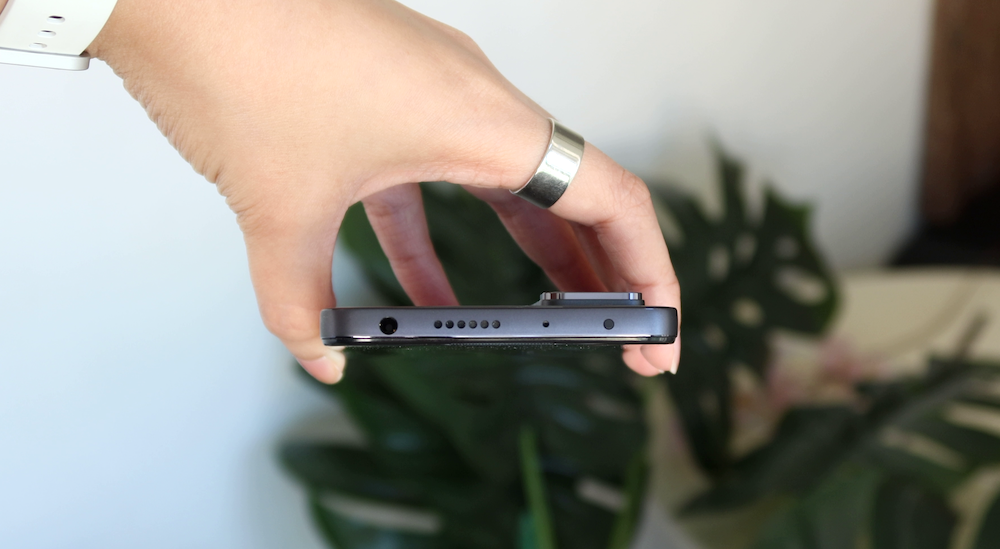
Now the bottom part is also packed with the primary microphone, primary speaker, USB Type C port, and a hybrid card slot for a nano-SIM or a microSD card.
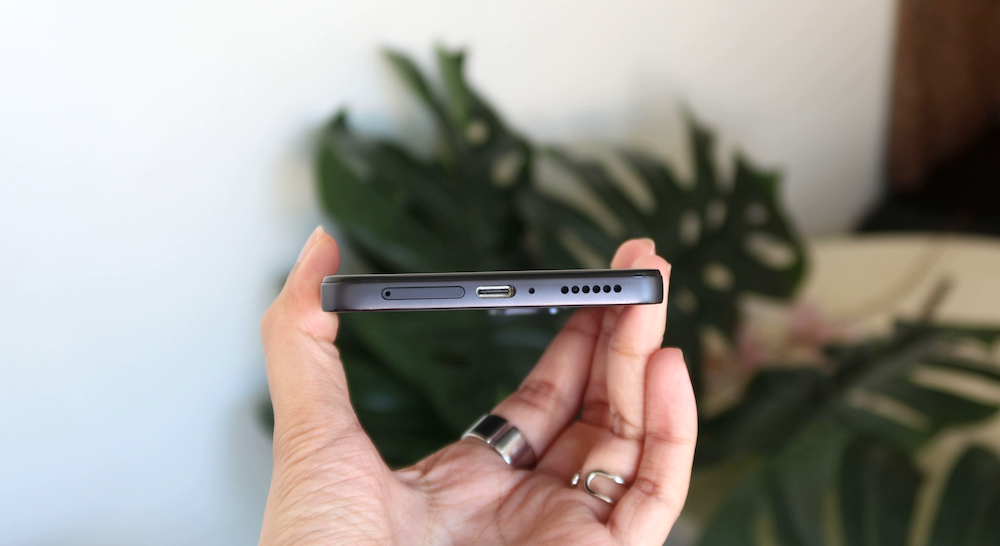
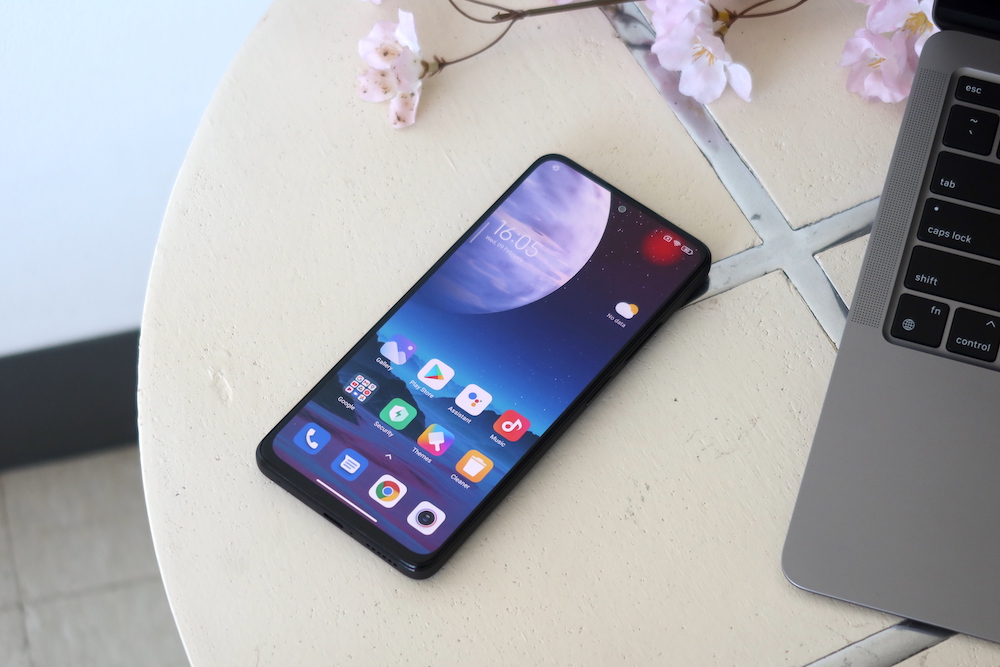
Flipping upfront, we get a similar display to its predecessor. Not that we’re complaining, it’s still very nice to see a 6.67-inch 120Hz FHD+ AMOLED display with Gorilla Glass 5 protection in a midrange smartphone. The bezels look relatively slim with the call speaker on the top part, and as you can see we get a punch hole notch on the upper-middle, which you can still hide with a black bar in the settings. There’s an additional screen protector included in the box that you can install yourself.
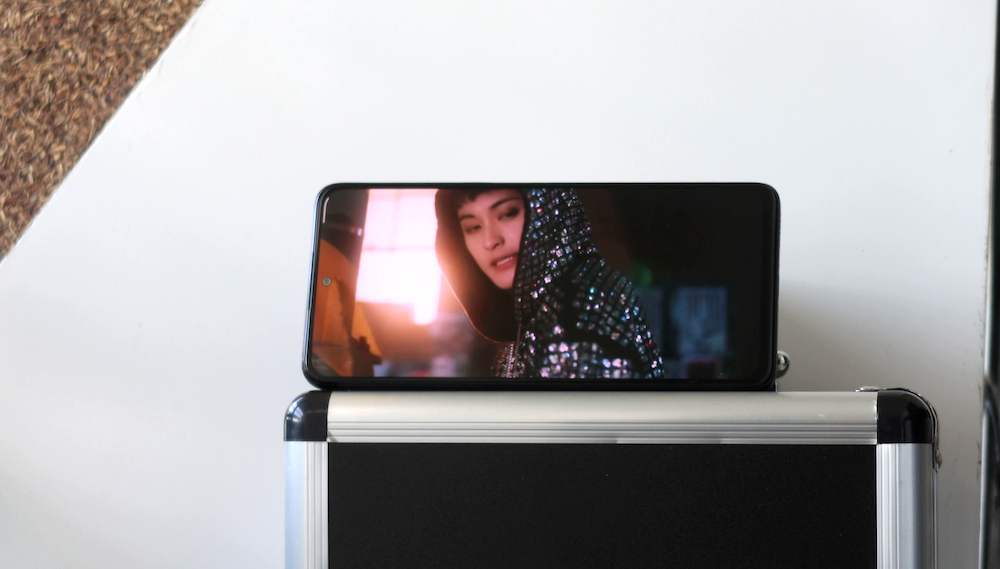
This display is vibrant and sharp with nice deep blacks, so maximizing the system-wide dark mode is great. Viewing angles are looking good, and it’s easily viewable under direct sunlight with a peak brightness of 1200 nits.
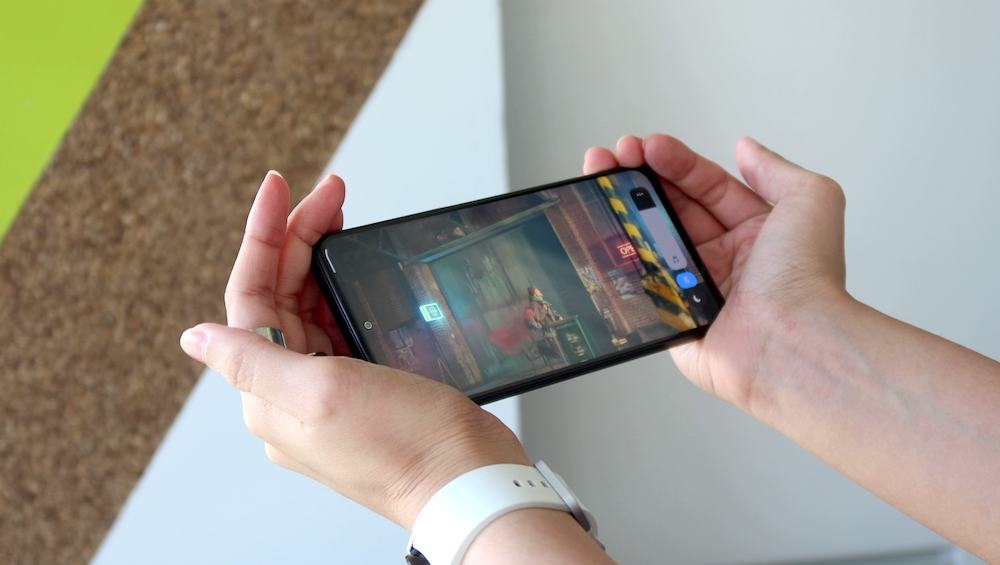
In the display settings, you can change the color scheme to Standard, Saturated, or Vivid, and you can also tweak your preferred color temperature. Then, of course, there’s the option to switch the refresh rate between the smooth 120Hz and the standard 60Hz if you want to save more battery life. Xiaomi’s reading mode is also on board and it helps reduce eye fatigue if you’re always on your screen.
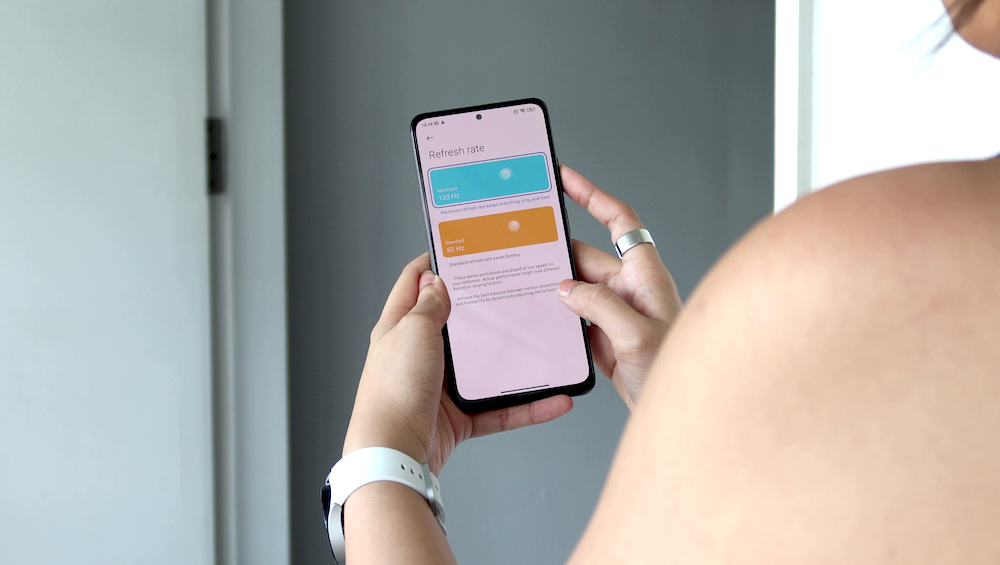
As for audio quality, the Redmi Note 11 Pro 5G features a dual-stereo setup that can get really loud compared to most smartphones in its price range. Oftentimes we get a balanced mix of mids and highs but expectedly still lacks bass. Thankfully you can always use your wired headsets on it for an even better listening experience.
The triple set up at the back is composed of a 108MP f/1.9 wide primary lens, which is similar to last year’s model, followed by an 8MP f/2.2, 118-degree ultrawide lens, and a 2MP f/2.4 macro lens. At the front, there’s a single front-facing camera with a 16 MP f/2.4 lens.
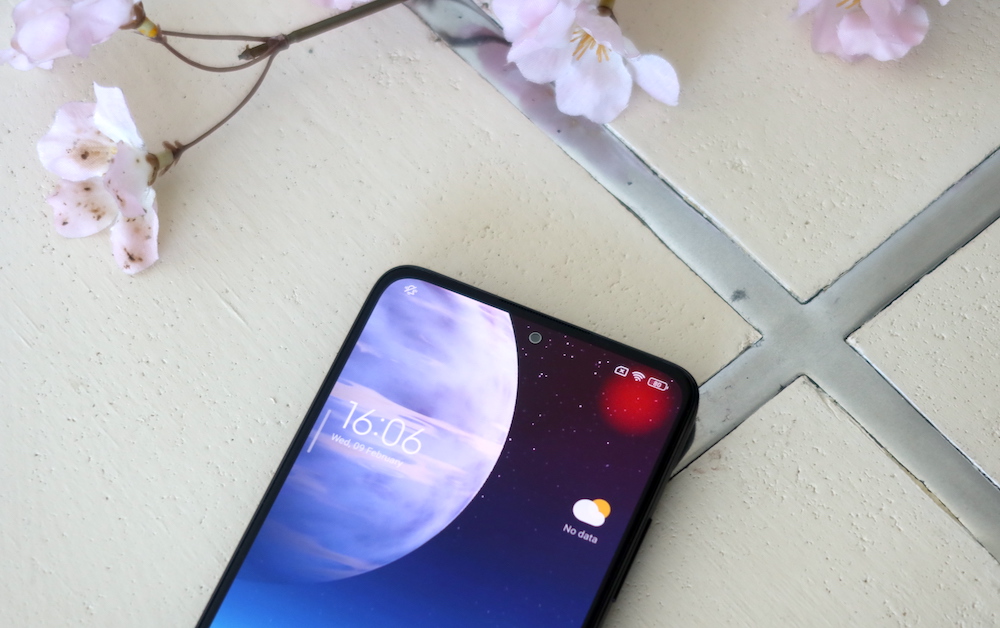
When it comes to quality, we’re impressed with the images produced. It brings out a lot of details, vibrant colors, and a decent dynamic range in bright conditions. Ultrawide photos also turn out good as well. However, looking closely at the edges and corners, there is some softness and distortion.
The set of cameras allows you to zoom in from 2x, 4x, 6, 8, and up to 10x with still preserving some clear details. But if you want better quality, then you can always use its 108MP mode or the Pro mode that also gives quick access to the 108MP lens.
As for night photography, it often looks shadowy and muddy without any AI or night enhancement turned on. But when we used its night mode on, we get more subtle details with better lighting effects. It does a respectable job.
Checking out some selfies, it looks a bit pale most of the time, falling more on cooler tones. But with very good lighting or sunlight, you can get a natural-looking photo.
Its portrait mode provides good enough subject-background separation, plus you can adjust the aperture and blur style depending on what you prefer in post.
For videos, weirdly, you can shoot only up to 1080p at 30 fps. It’s rather disappointing that the brand decided to remove its 4k video recording option here, since it’s becoming a norm in a lot of midrange smartphones already, and this is their Pro 5G model, c’mon. But anyway, there’s a Pro video mode with stabilization that you can take advantage of.
Running the software show is Android 11, skinned with MIUI 13. The interface still resembles MIUI 12 a lot but a few upgrades on the font, live wallpapers, privacy features, and overall app performance.
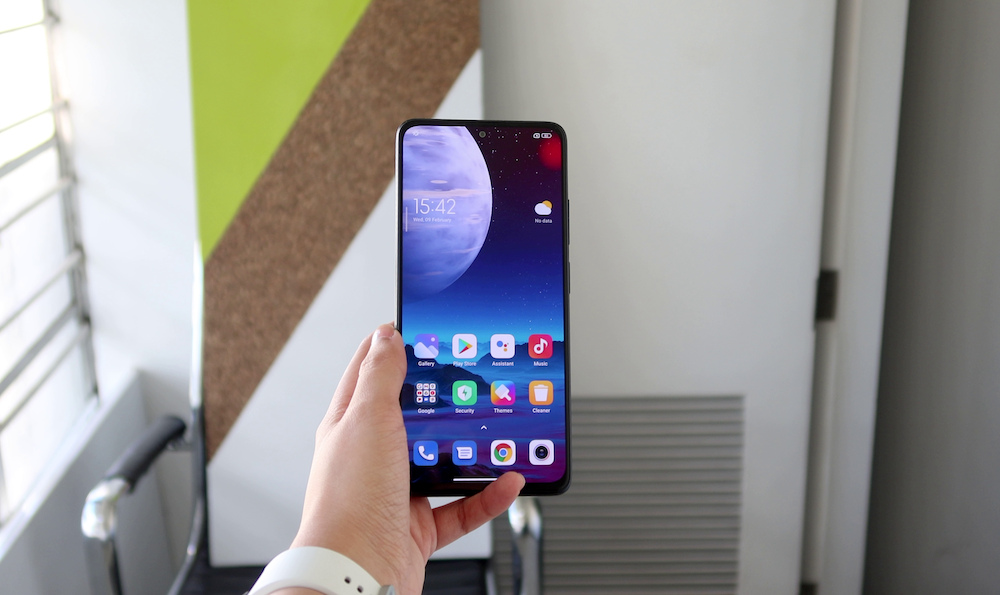
Apps are arranged on the home screen, but there’s also an option for an app drawer if that’s what you prefer. Thankfully, there are now lesser ads across the system, and the promoted ads toggle is now turned off by default. Well, you can still turn it on if for some reason you want the ads.
You have the option of customizing between a system-wide light mode or dark mode. Then, of course, there’s also the option to change the Control Center style if you want the simple and familiar drop-down style or the newer iOS familiar look that separates the notifications from the main control center. Personally, we prefer the new version.
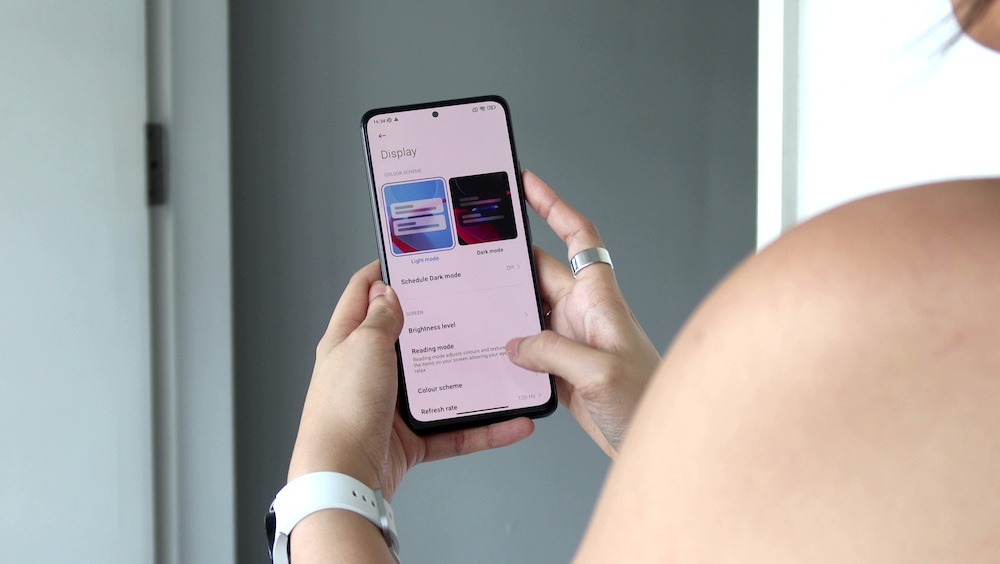
As expected, we still get a number of Xiaomi proprietary apps, Google apps, and a few third-party apps like Twitter, Lazada, Netflix, TikTok, Facebook, and Spotify. I like that majority of these apps are used by most users, so they’re more of a convenience than a bother.
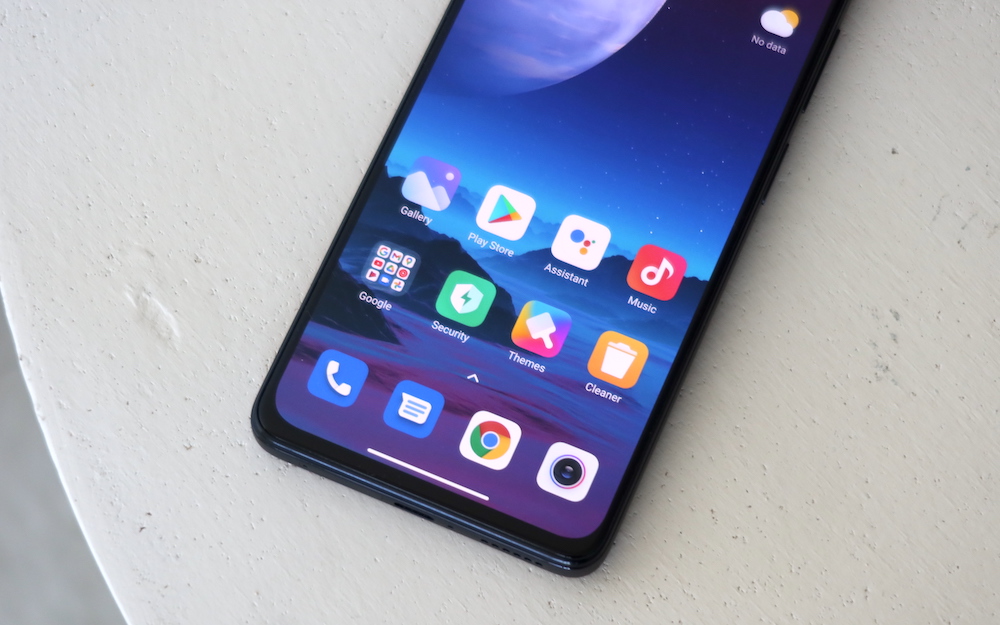
With 128GB of internal storage, this leaves us with a usable space of 106GB out of the box, that you can expand with the dedicated microSD card slot for up to 1TB.
Moving on to performance, locally, the Note 11 Pro 5G is equipped with a Qualcomm Snapdragon 695 processor, together with an Adreno 619 GPU, and 8GB of RAM with 3GB memory extension available—you can turn this on in the settings manually for more efficient multitasking.
So the new Snapdragon 695 is an octa-core chipset manufactured using a 6-nanometer process technology, and it’s comparable to a Snapdragon 765G in terms of performance with a slight advantage on battery life.
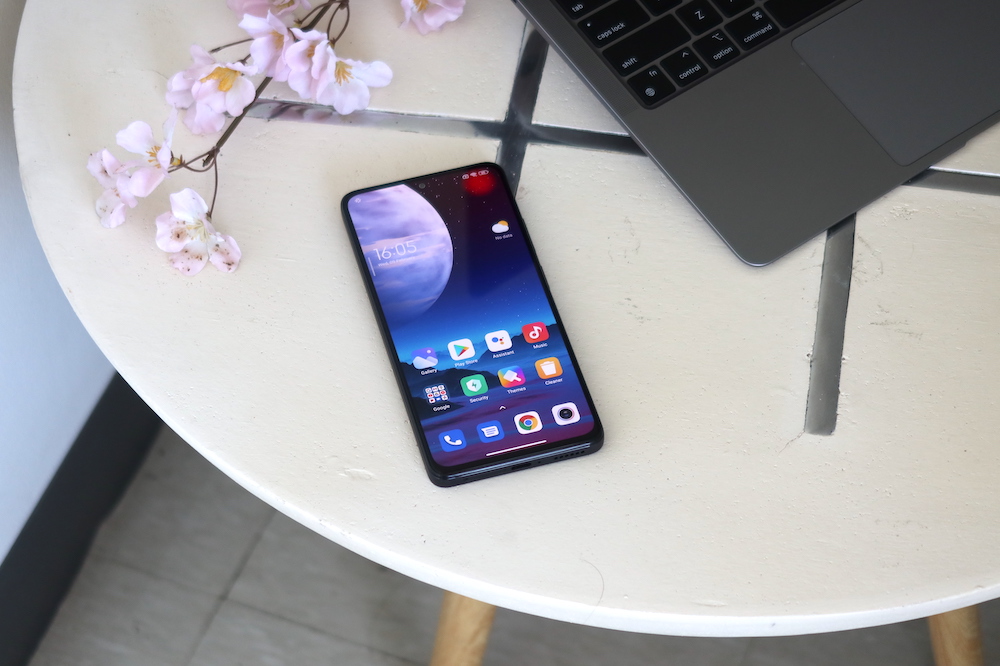
In our day-to-day experience, the phone has been great, especially for ordinary tasks like taking photos and videos, running social media apps simultaneously, and browsing. We get a smooth scrolling and even gaming experience thanks to its 120Hz refresh rate and 360Hz touch sampling rate.
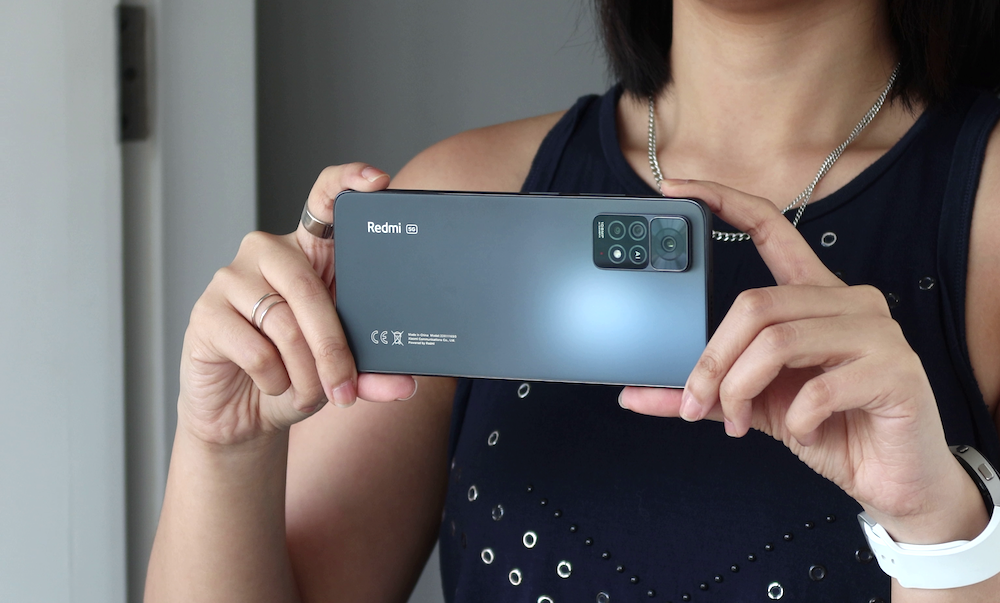
Although, we did encounter some heating when playing heavy games for a long period of time, not to an alarming level. There were also rare occasions wherein an app would just crash, if too many other apps are running in the background, therefore we suggest keeping the device optimized.
If you’re interested in the numbers, take a look at the benchmark scores we got:
When it comes to biometrics and security, you can unlock the device via the side-mounted fingerprint scanner and through facial recognition. Both worked snappily and accurately. Honestly, we think that placing the fingerprint scanner on the side is a more convenient way to unlock your phone as it is quick and easy to access.
The device’s connectivity features are complete with Dual-SIM, 5G, 4G LTE, Wi-Fi, Bluetooth 5.1, GPS, NFC, screencast, and an IR blaster.
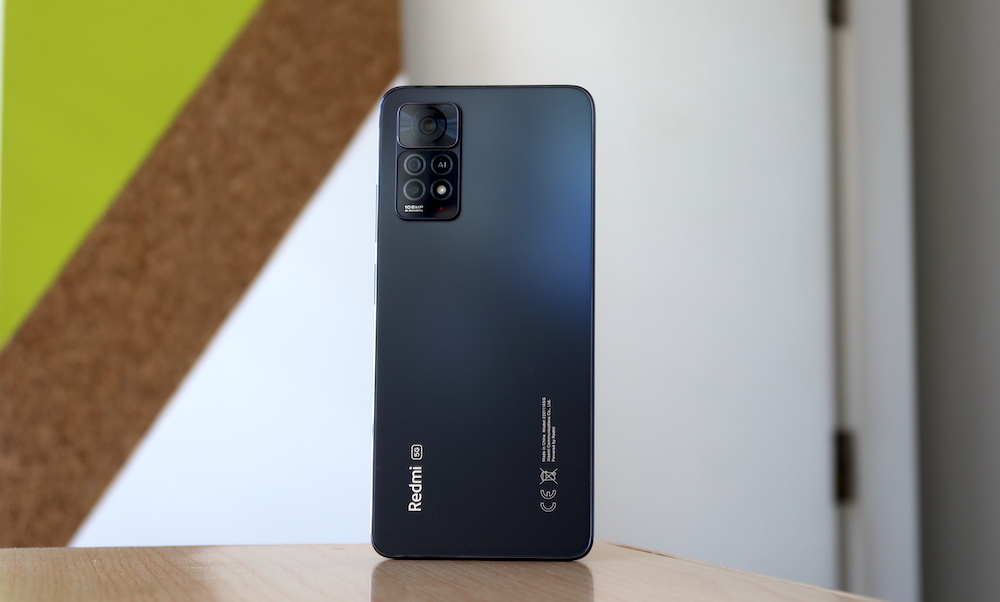
One of the major upgrades that we get is in the battery. Despite getting a lower capacity of 5000mAh compared to its predecessor, it is now well compensated with 67W fast charging. Surely, there’s an adapter and cable included in the box.
When we ran it in our standard video loop test, which entails playing a 1080p video on loop at 50% brightness, 0% volume,120Hz refresh rate, and airplane mode turned on, the Note 11 Pro 5G yielded 22 hours and 30 minutes. That’s very good. Charging, on the other hand, takes less than an hour to reach 100%.
Alright. We’re now down to price. Here in the Philippines, the Redmi Note 11 Pro is yet to be officially released, but based on its global pricing, we’re looking at between PHP 14USD 0.24INR 20EUR 0.23CNY 2-16,000. Stay tuned for future updates regarding the official tag.
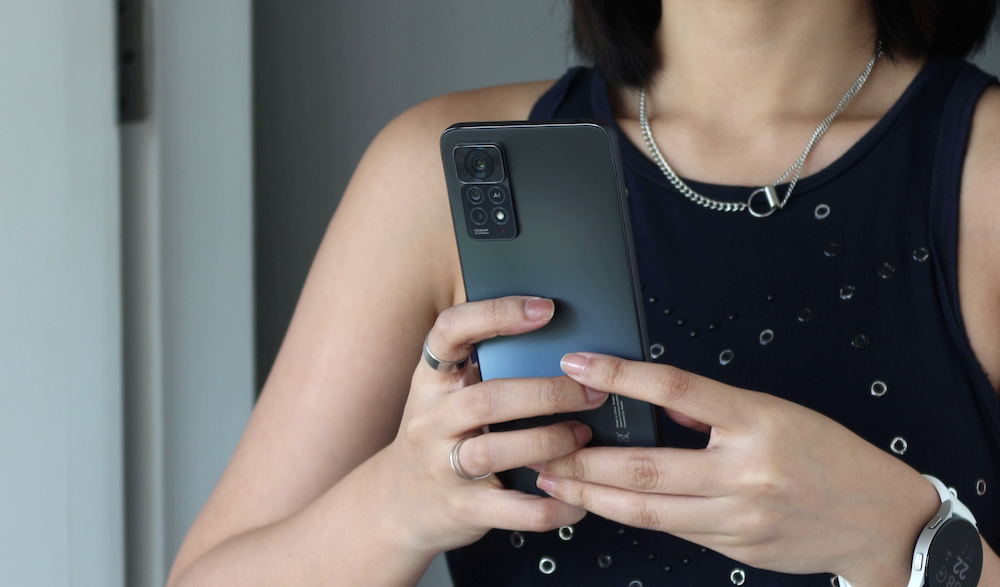
For our thoughts, honestly, it didn’t stray away much from its predecessor, but its upgrades in faster charging, overall performance, 120Hz refresh rate, and 5G connectivity seem like practical improvements that a lot of users would want to have. It’s more than enough for its price, making this another bang-for-your-buck device from Xiaomi. We highly recommend it unless the lack of 4k video recording is a deal-breaker for you.
Xiaomi Redmi Note 11 Pro 5G specs:
6.67-inch FHD+ (2400 x 1080) AMOLED display
120Hz refresh rate, 360Hz touch sampling rate
Corning Gorilla Glass 5 front
Qualcomm Snapdragon 695 SoC
Adreno 619 GPU
6GB, 8GB LDPRR4X RAM
64GB, 128GB UFS 2.2
microSD support (hybrid)
Triple-rear cameras:
• 108MP F1.9 main
• 8MP F2.2 ultra-wide
• 2MP F2.4 macro
16MP F2.4 front camera
Dual-SIM
5G, 4G LTE
WiFi 802.11 a/b/g/n/ac
Bluetooth 5.1
NFC
IR blaster
GPS, A-GPS, GLONASS, BDS, GALILEO
Fingerprint scanner (side)
USB-C
Dual speakers
3.5mm audio jack
IP53 splash-proof
MIUI 13 (Android 11)
5,000mAh battery w/ 67W fast charging
164.19 x 76.1 x 8.12 mm
202 g
Polar White, Atlantic Blue

YugaTech.com is the largest and longest-running technology site in the Philippines. Originally established in October 2002, the site was transformed into a full-fledged technology platform in 2005.
How to transfer, withdraw money from PayPal to GCash
Prices of Starlink satellite in the Philippines
Install Google GBox to Huawei smartphones
Pag-IBIG MP2 online application
How to check PhilHealth contributions online
How to find your SIM card serial number
Globe, PLDT, Converge, Sky: Unli fiber internet plans compared
10 biggest games in the Google Play Store
LTO periodic medical exam for 10-year licenses
Netflix codes to unlock hidden TV shows, movies
Apple, Asus, Cherry Mobile, Huawei, LG, Nokia, Oppo, Samsung, Sony, Vivo, Xiaomi, Lenovo, Infinix Mobile, Pocophone, Honor, iPhone, OnePlus, Tecno, Realme, HTC, Gionee, Kata, IQ00, Redmi, Razer, CloudFone, Motorola, Panasonic, TCL, Wiko
Best Android smartphones between PHP 20,000 - 25,000
Smartphones under PHP 10,000 in the Philippines
Smartphones under PHP 12K Philippines
Best smartphones for kids under PHP 7,000
Smartphones under PHP 15,000 in the Philippines
Best Android smartphones between PHP 15,000 - 20,000
Smartphones under PHP 20,000 in the Philippines
Most affordable 5G phones in the Philippines under PHP 20K
5G smartphones in the Philippines under PHP 16K
Smartphone pricelist Philippines 2024
Smartphone pricelist Philippines 2023
Smartphone pricelist Philippines 2022
Smartphone pricelist Philippines 2021
Smartphone pricelist Philippines 2020
Fred Ferrer says:
We want the dimensity version
Veense says:
The 3.5 jack is on top and not in the bottom why? Im not buying this.
Park Vince says:
Actually you can use an adapter jack for type C if you want to use jack at the bottom, putting it on top is an alternative position to use.
Tech News says:
Redmi will forever be the best midrange phone and their high end will also be affordable, but I doubt if they can beat Samsung and Huawei.
But, Poco F3 is still one of the best mid-range phone to consider.